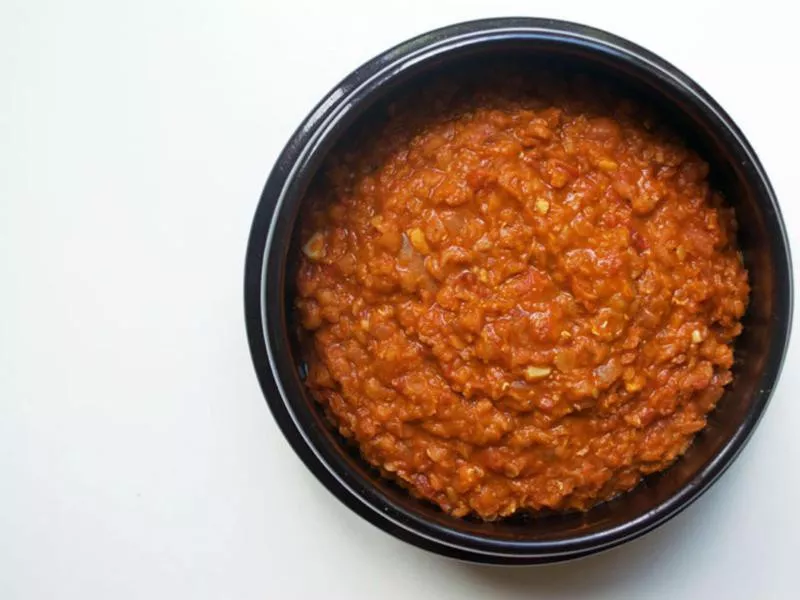When 25,000 respondents across 24 countries were asked to select their favorite national cuisines, Italian, Chinese, Japanese, Thai and French came out on top.
Of course, these exemplary culinary scenes have their reputations for a reason. But what about all the lesser-known locales where one can find a memorable meal, like the cultures of North Africa, South America and Lancaster County? Who’s celebrating their cuisines besides their locals?
We set out to create a new culinary map for the epicurean traveler, one in which criminally underrated cuisines could shine like freshly shucked oysters. The result is a list that should surprise and inform even the savviest gourmands.
Burmese
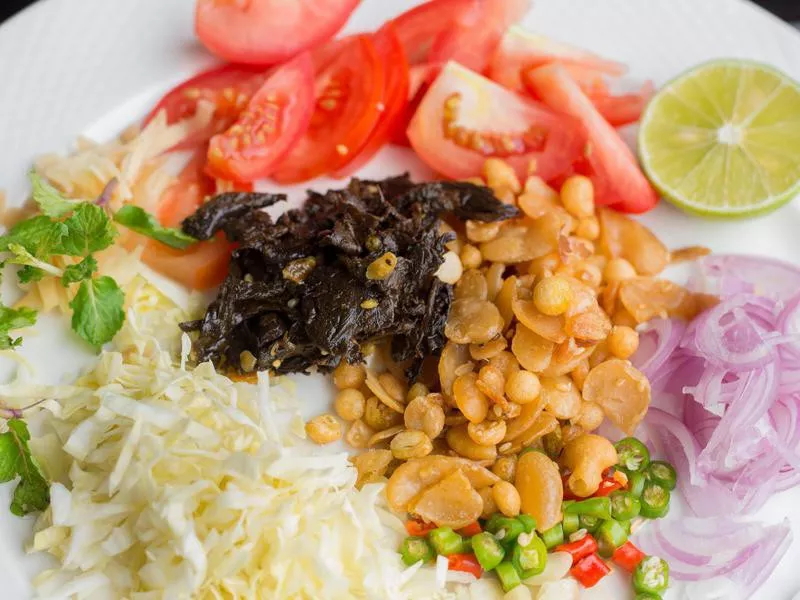
Tea leaf salad Getty Images
Textural pleasures and funky umami might best describe the food of Myanmar (formerly known as Burma and still the name of the cuisine). But due to five decades of military rule and total isolation from the rest of the world that ended not too long ago, most of us have never heard of, let alone tasted, the country's signature dishes.
And that’s a real shame.
Standout dish: Mohinga, a savory fish and rice-noodle soup, is a must-try. But the real star of Burmese cuisine is the Tea-Leaf Salad, a mix of cabbage, tea leaves, chile, cilantro, dried shrimp powder, fried garlic, toasted peanuts, crushed red pepper, split peas, fish sauce and lime juice. The balance of flavors and textures in this is truly sublime.
Laotian

Getty Images
Vietnamese and Thai are the most well-known food cultures of the Indochinese Peninsula, but perhaps the region’s most influential cuisine can be found sandwiched like banh mi between those two countries.
Big on Thai papaya or mince-meat salads and sticky rice? Those dishes are actually Laotian.
Standout dish: Laap (sometimes called Larb) is a minced-meat salad flavored with a squeeze of citrus juice, chilis, garlic, mint, onion and padek, a seasoned fish sauce. The meat can be beef, pork or fish, raw or cooked. It doesn't matter what you choose, as all options satisfy.
Afghan
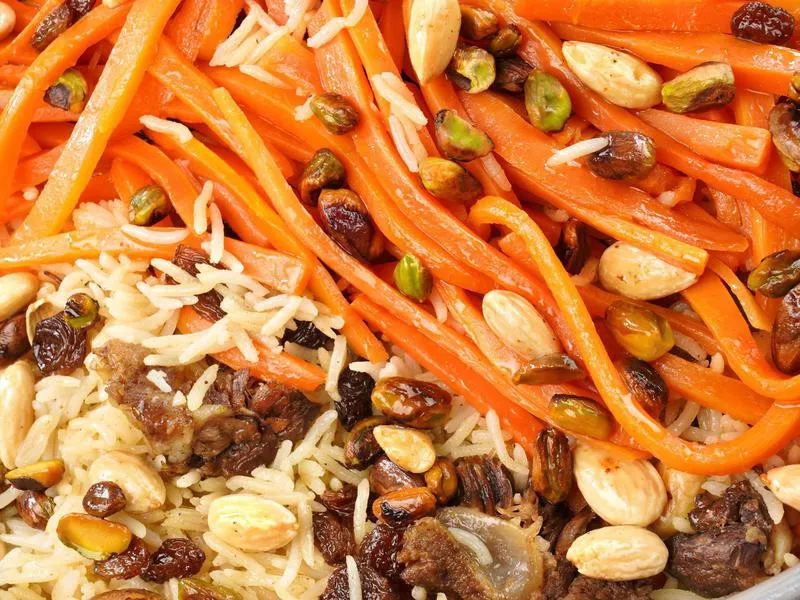
Getty Images
Afghanistan has always been in a precarious position geographically, but this has actually been a great influence on its food, the backbone of which is largely derived from Persian, Indian, Chinese and Mediterranean cuisines. Unlike some other countries in the region, Afghanistan fare is rarely spicy, making it palatable to many.
Standout dish: Kabuli Pulao, a deceptively simple dish of steamed rice, lamb, carrots and raisins, is spiced to perfection. The “Kabuli” in the name comes from Afghanistan’s capital of Kabul.
Ecuadorian

Getty Images
Ecuador’s cuisine runs the gamut from rib-sticking meat and potatoes up high in the Andes, to light and flavorful seafood dishes like ceviche in tomato sauce on the coast, to tropical fruit concoctions containing various varieties of plantains and bananas.
In short, there’s something for every palate. And it’s all superb.
Standout dish: Fried patties of grated potato, cheese and seasoning, Llapingachos are great on their own but even better when paired with another local dish. Try them with Hornado, spit-roasted pig, for optimal results.
Ethiopian

Getty Images
If you’re eating at an African restaurant, chances are it’s Ethiopian. The food culture of this Horn of Africa nation is easily the most exported cuisine on the continent, and for good reason. But it’s still not enjoyed nearly enough.
Ethiopian fare is simple yet complex, full of exotic flavors and quite healthy. The country’s staple bread, injera, is a flat sourdough dotted with bubble craters, and serves as both nourishment and utensil — Ethiopians eat everything with their hands.
Standout dish: Injera pairs best with tibs, small cuts of meat (usually beef) sauteed in butter or oil and seasoned with a just-spicy-enough mix of hot pepper, onions, garlic and rosemary.
You should also never leave an Ethiopian restaurant without trying the honey wine, flavored with a hops-like herb. It truly does taste like honey.
Eritrean
This neighbor of Ethiopia has a very similar diet, with stewed meat dishes and tangy injera bread featured at most meals. However, due to the country’s Ottoman and Italian colonial history, Eritreans use more noodles, curry and cumin than Ethiopians. Eritrea is also known for its traditional coffee ceremonies, which can be hours-long affairs.
Standout dish: Tsebhi Birsen is a lentil curry made with berbere, a potent spice mixture featuring chili peppers, fenugreek and other spices of the cook’s choosing. The dish, often simmered with tomatoes and onions, is easily one of the world’s most satisfying vegetarian meals. (Just be aware that it comes with a kick!)
Maltese
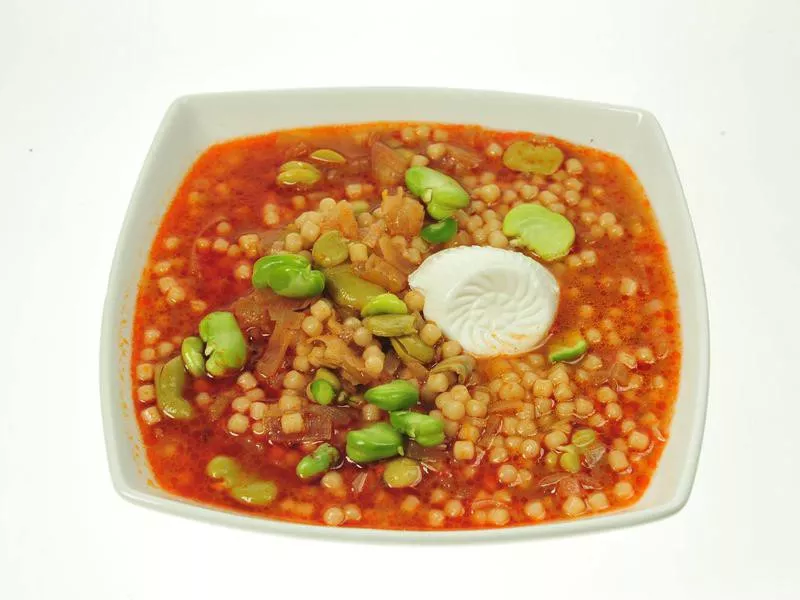
Klabb tat-Tisjir by Anton B. Dougall / Facebook
A certain 1930 book and subsequent Humphrey Bogart film might’ve put this Mediterranean island nation on the map, but its food culture is too often overlooked. Malta sits along an ancient trade route and thus takes culinary cues from North Africa (tajine), Sicily (desserts), France’s Provence region (fish stew and aioli) and even Britain (pungent condiments).
Standout dish: Soups are big in Malta, and one of the best you’ll try is Kusksu. This hearty stew is made with broad beans, herbs, tomato paste, peas, mint and small pasta beads. When Maltese cheese and eggs are added as well, this soup can’t be beat.
Sri Lankan
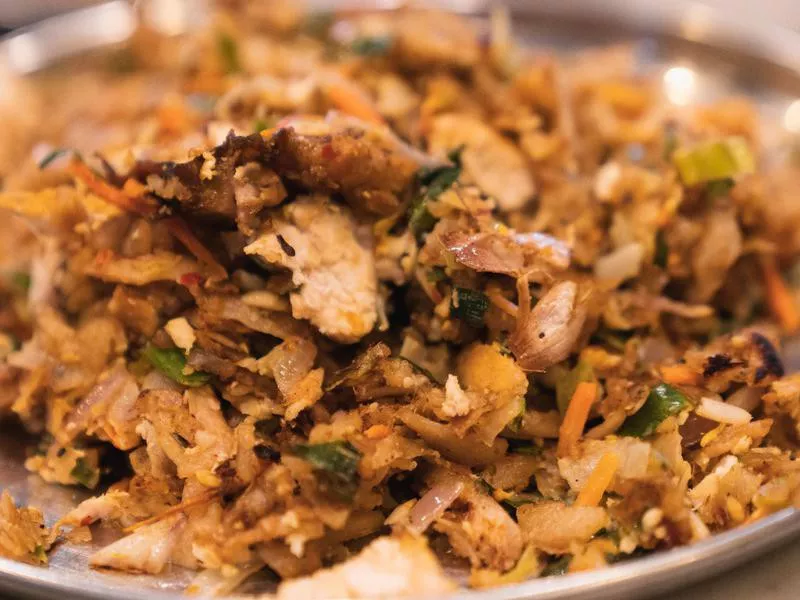
Getty Images
Sri Lanka’s food is all over the map thanks to the country’s proximity to both India and Southeast Asia and its Dutch colonial past. Spices have always been an integral component of the cuisine and economy of this island nation, and indeed the stews and curries here are intricate and deeply flavored. Rice is the most important foodstuff, and it gets dozens of treatments and is eaten with every meal.
Standout dish: Kothu is a street-food staple for a reason. The stir-fried mix of meat, eggs, vegetables, spices and chopped roti flatbread is easy to make and even easier to eat. Surprisingly, rice isn’t part of the equation, but this is a Sri Lankan classic nonetheless.
Cambodian
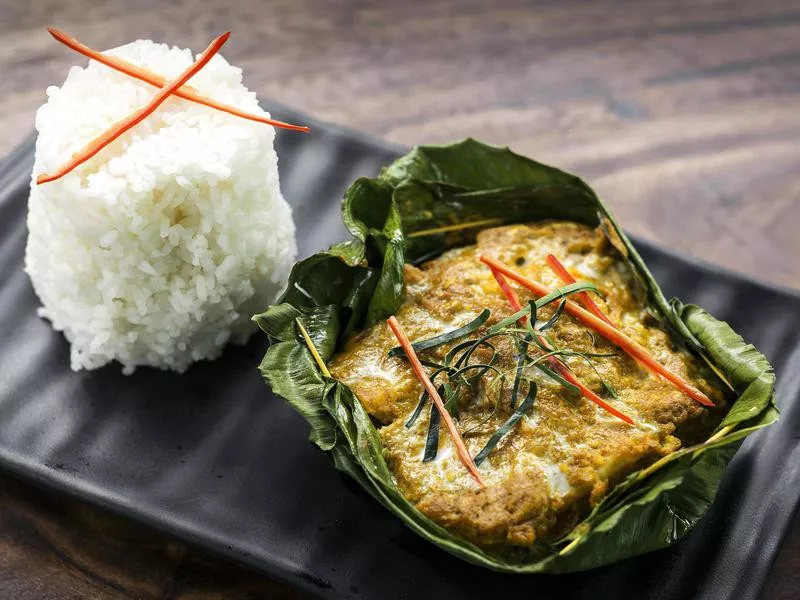
Getty Images
Most traditional Cambodian, or Khmer, cuisine is hard to come by outside its Southeast Asian Peninsula country of origin. That’s unfortunately the result of civil war and the brutal reign of the Khmer Rouge in the 1970s that led to widespread famine and failed collective farming practices.
But those days are over, and Cambodian food is making its way around the globe. Khmer cuisine, like the Mekong River that runs through the heart of the country and supplies much freshwater fish and irrigation for crops, is full of twists and turns. The flavors are pungent, but completely palate-pleasing.
Standout dish: In addition to touting a delightful name, Fish Amok is a signature Cambodian dish that delivers. The ingredients — diced fillets of freshwater fish, coconut milk, fish sauce, palm sugar and eggs — are given kick with the help of a potent spice paste called kroeung. The whole thing is then steamed and served in a banana leaf shaped like a bowl.
Hawaiian
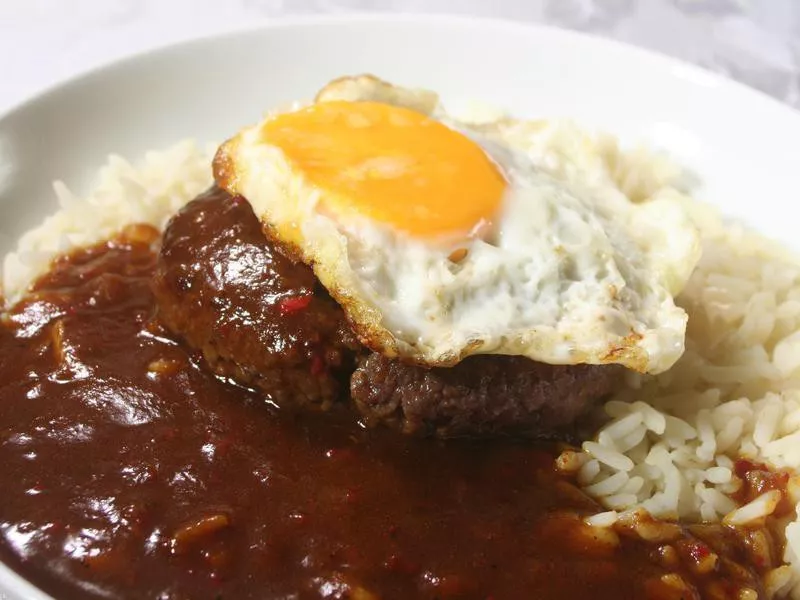
Getty Images
A common mistake visitors to America’s youngest state make is to seek out fast-food and chain restaurant culture, which is everywhere on these islands. But Hawaii has really interesting foods that were influenced by Chinese and Japanese cultures and even the U.S. military.
One can easily subsist on healthy seafood options like poke or indulge in rich dishes like luau pig and anything containing Spam, a byproduct of World War II that gets an undeserved bad rap.
Standout dish: Loco Moco is a more recent addition to the Hawaiian culinary scene, but has quickly established itself as a favorite. White rice topped with a hamburger patty, a fried egg and a healthy serving of brown gravy, this dish puts many other comfort foods to shame. (Some places add in other Hawaiian staples, like kalua pork, Portuguese sausage and mahi-mahi, as well.)
Kenyan
With such ethnic and cultural diversity, there’s no single dish that defines Kenya. Due to its long colonial history, there are a lot of similarities to Indian cuisine, such as flatbread like chapati, heavily seasoned battered potato chips and samosas. But tribal cuisine still dominates the landscape, and it’s much different inland than on the coast.
Standout dish: A dough-like corn mash called Ugali is the one thing you will find everywhere in Kenya. Made with water and maize, millet or sorghum flour, this porridge is extremely simple but pairs beautifully with meats and sauces on the side.
Bolivian
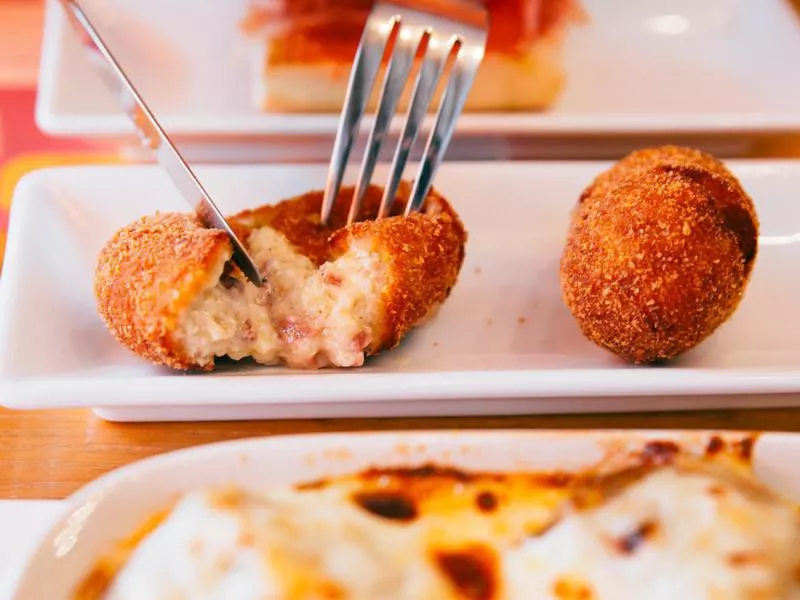
Getty Images
With one of the largest indigenous populations in South America, Bolivia touts a culinary scene that’s greatly influenced by pre-Columbian foodstuffs like potatoes, corn, beans and quinoa. The Spanish brought meats like pork and chicken, along with rice, adding more appeal to an already winning food scene.
Standout dishes: Terrific examples of the old meeting the new include papas rellenas, fried mashed potato balls filled with meat, vegetables and cheese; and picante de pollo, spicy fried chicken with rice and potatoes.
Iranian
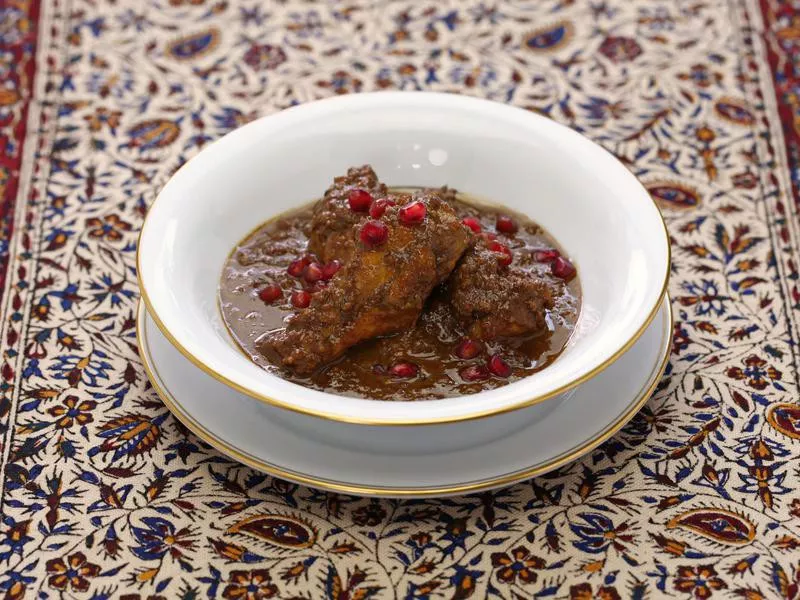
Getty Images
Iranian cuisine, also called Persian cuisine, is undeniably dynamic. Influences come from Greek, Turkish, Caucasian, Russian and Central Asian cultures, but Iranians have crafted a culinary scene that’s entirely their own.
Rice and bread, vital components of any meal, are elevated to unseen heights with advieh, the wide variety of pungent veggies and dried fruits used to flavor dishes. Saffron, cardamom and rose water are also used liberally, and kebabs and stews are the dominant protein sources.
Standout dish: Of the country’s many excellent stews, Fesenjan is perhaps the most beloved. The dish features meat (usually chicken), walnuts and pomegranate, with saffron, cinnamon and/or a pinch of sugar sometimes added in as well.
Stone tablets from as far back as 515 BC listed walnuts, poultry and pomegranate preserves as staples in early Iranian pantries, making this a true classic of the region.
Indonesian
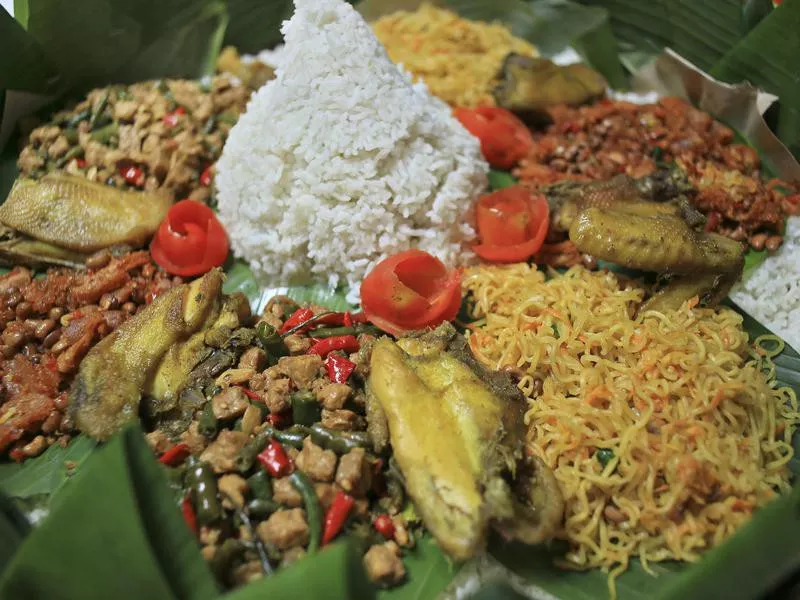
Getty Images
If variety is the spice of life, we’re moving to Indonesia. With 6,000 populated islands and 300 different ethnic groups, Indonesian food is truly a melting pot of cultures and cuisines from around the world. Mirroring other Southeast Asian countries, coconut and peanuts are both sweet and savory ingredients, and skewered meat is grilled to perfection.
On the YouGov survey, Indonedian cuisine was listed as the 19th most popular, so it’s not completely off the global radar. Nonetheless, it demands more love.
Standout dish: The traditional dish here is Tumpeng, a cone-shaped rice dish prepared with great care using a woven bamboo container, and served with meats and vegetables. The dish is a staple during special occasions in Indonesia.
Filipino
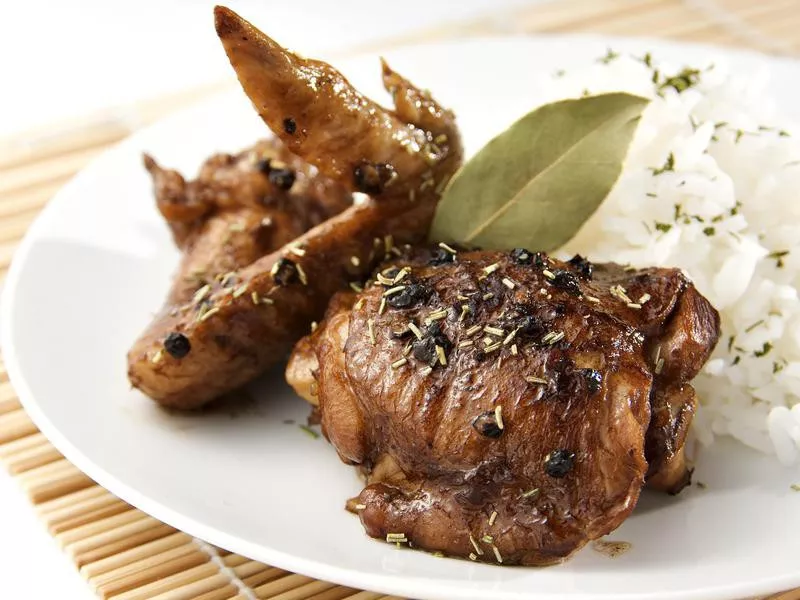
Getty Images
Like its neighbor Indonesia, the Filipino archipelago consists of hundreds of distinct ethno-linguistic groups that have contributed to its cuisine. It also has Chinese, Indian, Spanish and even American influences.
Standout dish: For our palate, one of the brightest and most unique dishes is Adobo Chicken, which is braised in garlic, vinegar, oil and soy sauce.
Lebanese
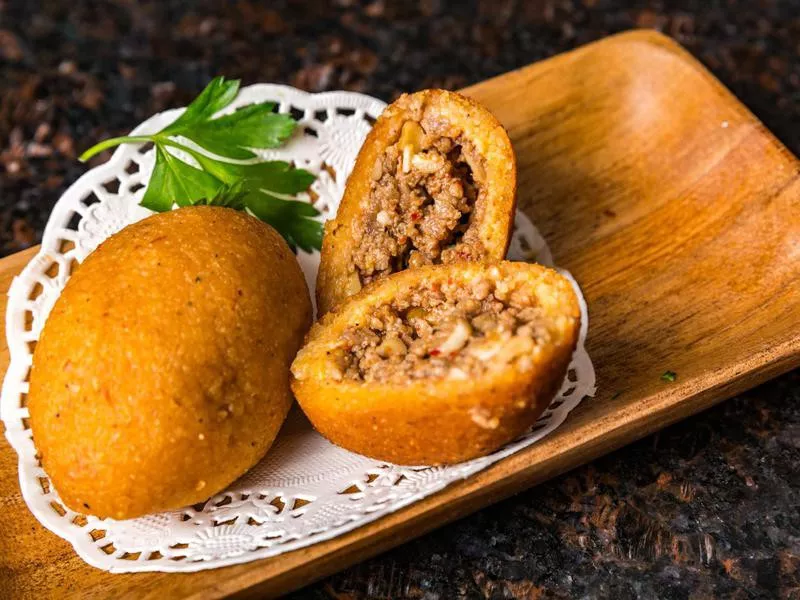
Getty Images
The whole Mediterranean diet that Americans love so much is just the normal way of eating in Lebanon. Some of the world’s best hummus, falafel and baba ganoush hail from this Middle Eastern nation. Fish and chicken reign supreme in the meat category, and it’s rare to find animal fats in anything except certain desserts.
Plus, the culture surrounding food and drink paired together is eclipsed only by Spain and Basque Country.
Standout dish: Kibbeh are croquettes made with ground beef or lamb, bulgur wheat, pine nuts and warm spices. Our advice? Try them with cinnamon.
Native American
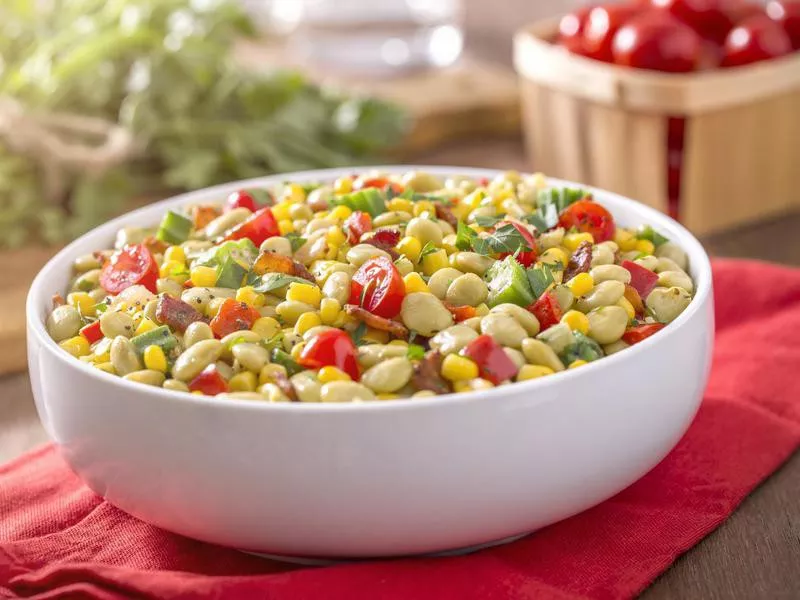
Getty Images
America’s original inhabitants gave the U.S. many of its staple foods — at least the ones without preservatives. Turkey, hominy, corn, cranberries and blueberries were all here before Europeans. The list gets even more mouth-watering with avocados, tomatoes, wild rice, papayas, pumpkins, sunflowers, potatoes and chocolate. Frybread is making a huge comeback nationwide, and it was Native Americans who first put salmon on a cedar plank.
Standout dish: Another dish Native Americans mastered first? Succotash, a healthy, hearty stew of corn, Lima beans and other in-season harvest vegetables. (Meats can be added too.) Affordable and easy to make, it later became a staple during the Great Depression.
Hungarian

Getty Images
The language of Hungary is totally distinct from its European neighbors, and the same can be said of its cuisine. Most people know paprika and goulash, but that’s merely the tip of the iceberg.
Standout dishes: Paprika is put to its best use as the foundation spice of fisherman’s stew, or halászlé. Humble sounding, it’s savory TNT. But the king of them all is the Dobosh Torte, a million-layer sponge cake with chocolate icing and caramel.
Balkan

Getty Images
Balkan cuisine is the most comforting comfort food you’ve likely never had. And while the Balkan Peninsula includes Greece, Balkan cuisine does not. This is the food of Bosnia-Herzegovina, Bulgaria, Serbia, Croatia, Slovenia, Montenegro, Albania and North Macedonia.
It’s heavy on meat (pork in the Christian parts and lamb and beef in the Muslims areas). Look also for stuffed cabbage rolls and spit-roasted whole animals, along with incredible cheeses and cured meats that rival those of Italy, Spain and France.
Standout dish: The humble Cevapi is ubiquitous throughout the region. These little casing-less sausages are grilled, then stuffed into a bread similar to pita and topped with onions and a butter-like cheese known to the gods as kajmak.
Tibetan
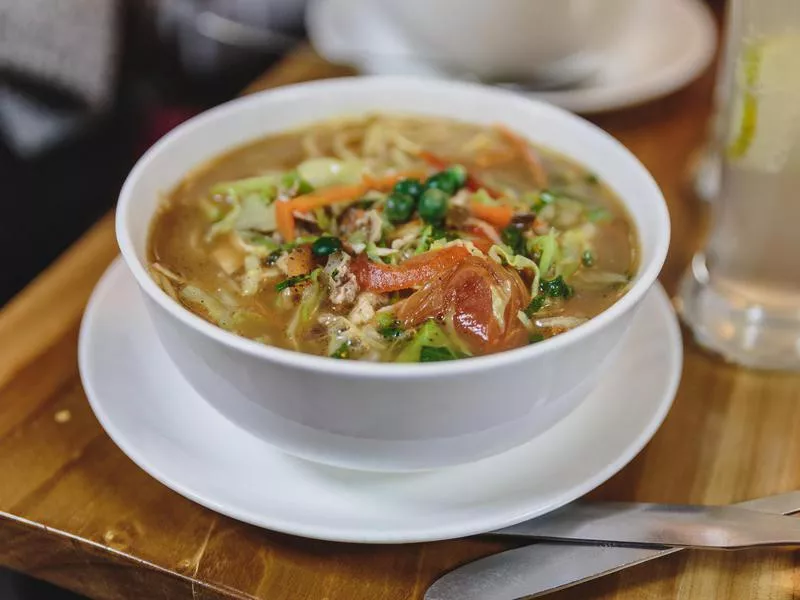
Getty Images
Tibetan food shares similarities to Chinese cuisine —locals call their dumplings momos, and noodles are popular — but not many. The culinary landscape is largely shaped by geography — high altitudes and harsh climates — and a lack of conditions for growing produce. Protein is essential, so this is something of a meat and dairy paradise. Goat, yak and mutton are staples prepared in a variety of ways.
One thing you will never eat here is fish, as those that live in Tibet’s freshwaters are considered holy.
Standout dish: As you’ve probably noticed, many global cuisines favor hearty signature soups. Tibet’s is the mild Thupka, made with Tibetan wheat noodles, bone broth, vegetables and the main meat you’ll find in the region: yak. (It tastes a little like beef, in case you’re curious.)
Georgian

Getty Images
It’s true that when you show up to customs at the airport here, an agent will check your passport then hand you a bottle of wine as a way of saying “welcome to our land of bounty.” Georgians care deeply about hospitality, and it shows in their cuisine and tradition of supras — massive feasts that can last for days.
Overall, the cuisine is best described as East meets West. They have their own soup dumplings like the Chinese xiao long bao and flatbreads that rival those of India. Walnuts are huge here, as is their oil, and many salads are decidedly Mediterranean in appearance and taste.
Standout dish: Khachapuri combines two of the greatest foods on Earth — bread and cheese (in this case, traditionally, imeruli and sulguni cheeses). The staple is taken to the next level in the coastal region of Adjara, where it’s served with an egg in the middle.
Uyghur
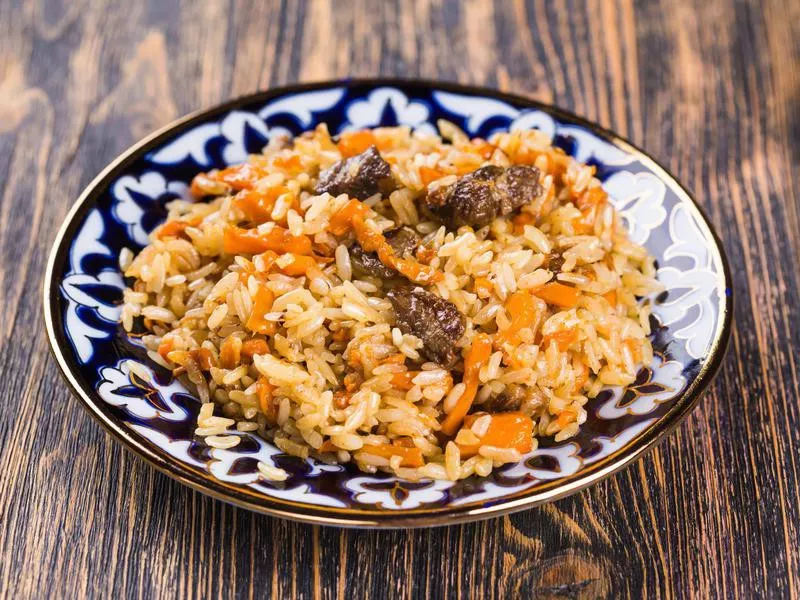
Getty Images
The Xinjiang province of China, where Muslim Uyghurs are from, lies along the legendary Silk Road. The cuisine here is a combination of Turkish and Central Asian influences; hand-pulled noodles, lamb and dumplings dominate, and it’s all kicked up a notch with mind-blowing spices.
Standout dish: Uyghur polo is a pilaf of rice, lamb and carrots, slow-cooked in oil and seasoned to perfection.
Irish

Getty Images
We’ll take a thick slice of soda bread heavily slathered with rich, creamy butter any day at any time. Cows are happy in Ireland’s vast green pastures, and the country’s massive grain industry produces old-style milled flours, but there’s so much more to Irish cuisine. It’s fresh, locally sourced and heavy on seafood thanks to the surrounding Atlantic waters.
Ireland is where modern culinary techniques meet traditional ingredients in the tastiest of ways. And yes, the beer’s great too.
Standout dish: Colcannon makes brilliant use of Ireland’s most well-known commodity: potatoes. Cabbage or kale, butter or cream, and spring onions are mixed in with mashed potatoes to create a simple but thoroughly gratifying meal.
Caribbean
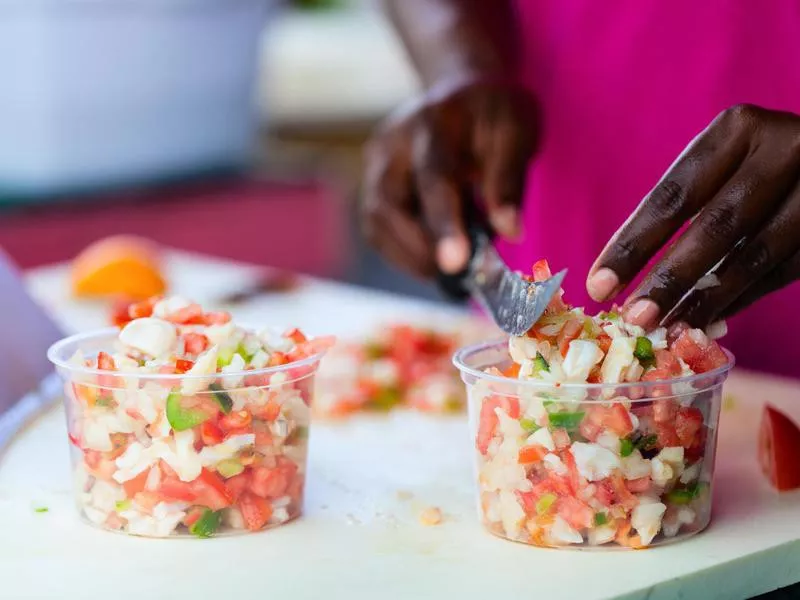
Getty Images
The cuisine of the West Indies is perhaps the world’s most fused food. There’s something from every corner of the globe in these island nations, but once you taste Caribbean green seasoning you will want to put it on everything. This sauce found throughout the region is a mixture of some or all of this and sometimes more: garlic, chili peppers, celery, green onions, cilantro, marjoram, rosemary, tarragon and thyme.
Tropical fruits and vegetables abound, as does seafood of all stripes and of course the typical land mammals.
Standout dish: There’s so much variety to Caribbean cuisine that it’s difficult to select one must-try food. But you can’t go wrong with the Bahamian conch salad, made with tomatoes, onions, peppers, celery and diced conch, plus fresh citrus juice for a refreshing kick.
Pennsylvania Dutch
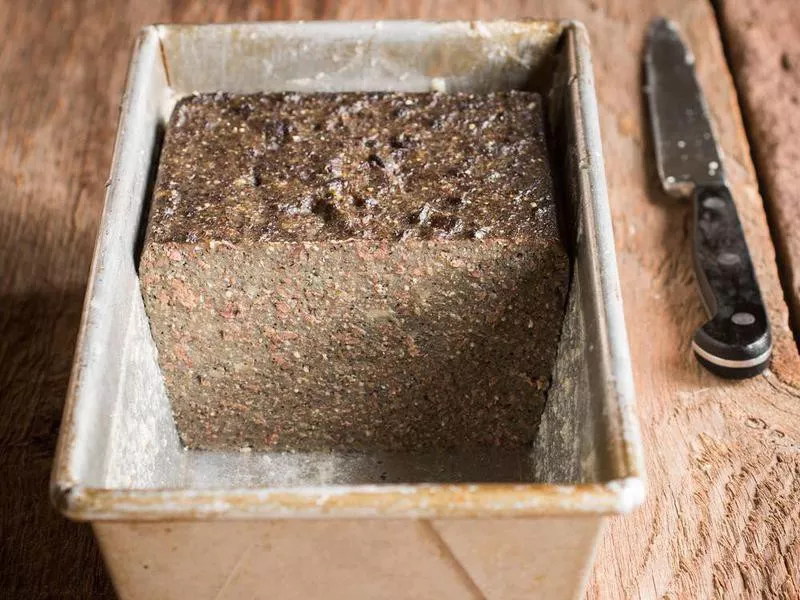
@foragerchef / Instagram
This part of the U.S. is generally reserved for jokes about Amish people and their electric fireplaces, but Pennsylvania Dutch country is nothing to laugh at. This amalgam of agrarian traditions, German heritage and a culture free from modern trappings like electronics and processed foods brought Americans many of their favorite foods: apple butter, chicken and waffles, corn fritters, gingerbread, cole slaw, angel food cake, Dutch Baby and funnel cakes, to name just a few.
Standout dish: Not ones to waste, Amish people took to boiling their meat scraps, adding them to bone broth, throwing in spices and a filler (like cornmeal or buckwheat flour), and letting the whole thing cool and set. The result? A dish called Scrapple that’s since become popular far outside the bounds of where it began.

